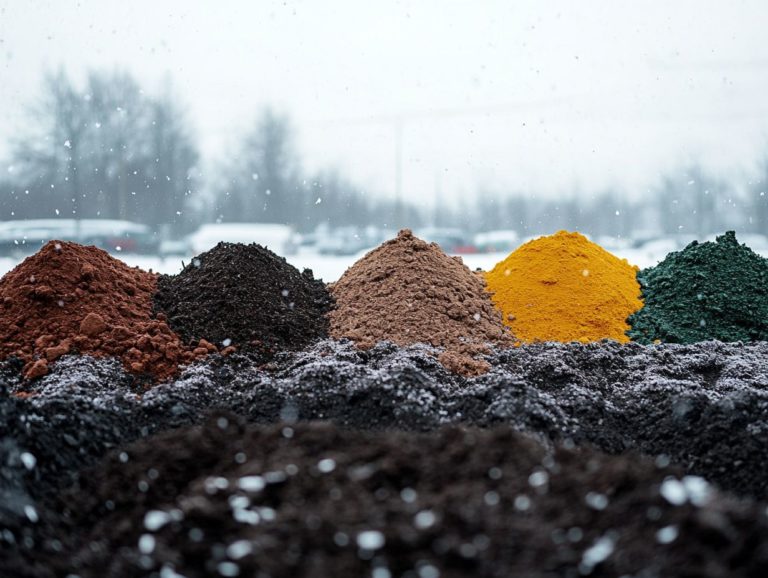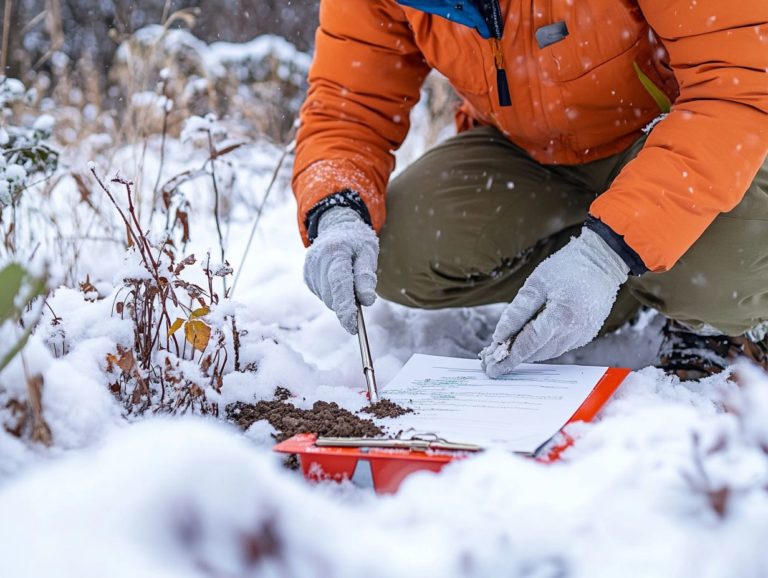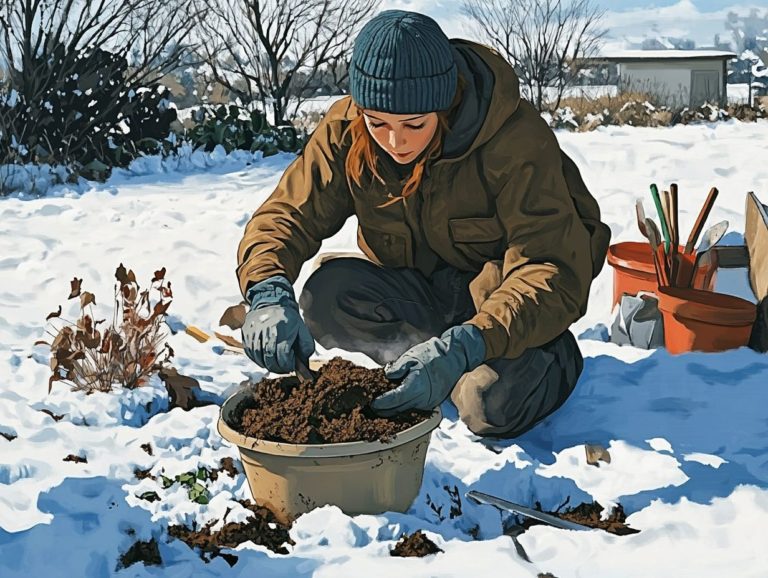Understanding Soil Salinity in Cold Weather
Soil salinity is critical for agriculture. It significantly impacts crop health, especially during colder months.
This article examines soil salinity s causes and the unique challenges posed by low temperatures.
You’ll learn how cold weather influences salinity, the best measurement tools, and strategies for prevention and management.
It also highlights how salinity affects various plants. These insights help you protect and improve your garden or farm.
Contents
Key Takeaways:
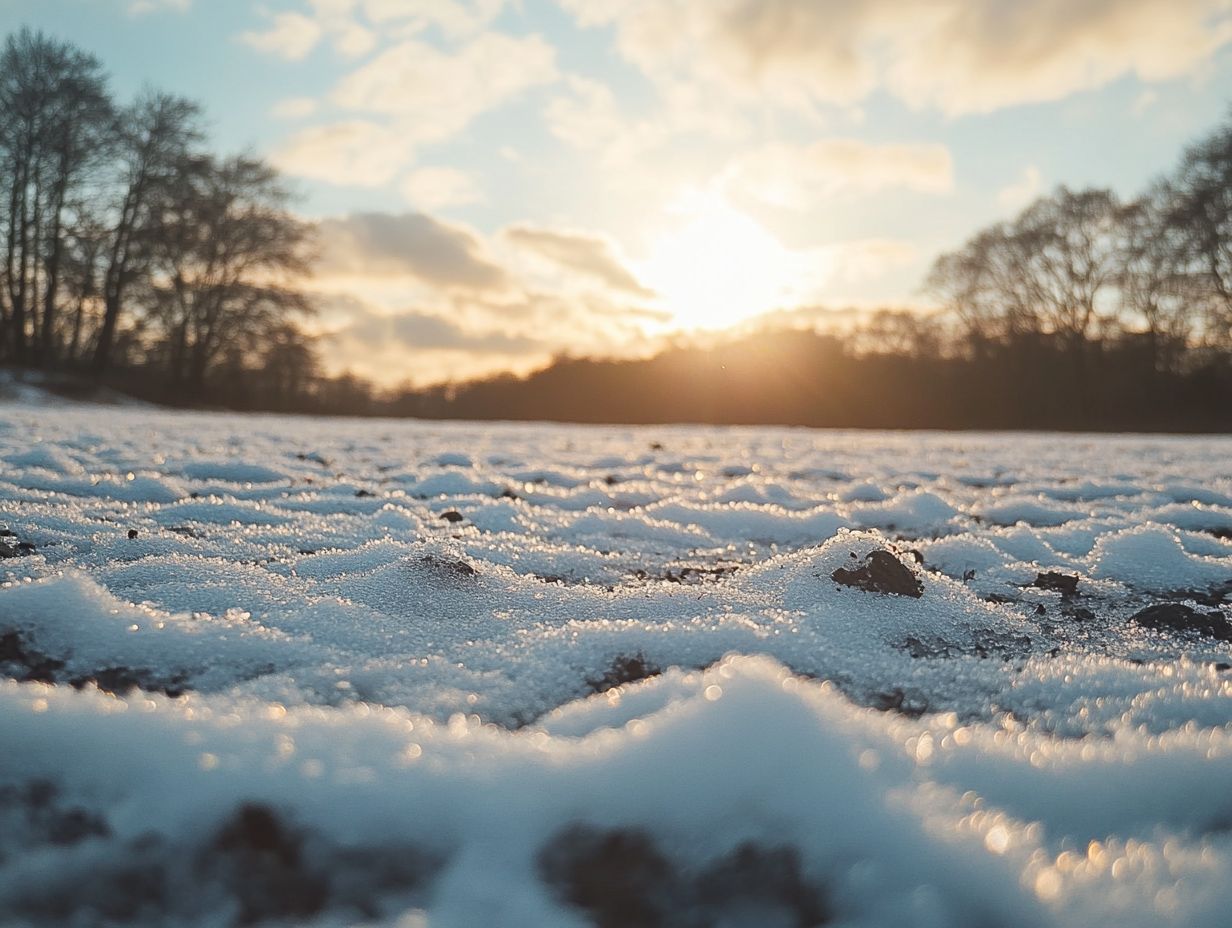
- Soils with high salt levels are saline. This can stem from natural processes like weathering and from human activities such as irrigation.
- Cold weather worsens soil salinity due to reduced evaporation and freezing, leading to salt buildup. This can harm plant growth and soil health.
- To measure soil salinity accurately in cold weather, use specialized tools like electrical conductivity meters and analyze soil samples in labs.
What is Soil Salinity?
Soil salinity is the concentration of soluble salts in the soil. It can severely affect agricultural productivity and crop yields.
In places like Uzbekistan, especially in the Khorezm region, soil salinity is a significant challenge.
This problem arises from natural processes like weathering of rocks and saltwater intrusion. These factors lead to salt accumulation, changing the soil’s properties and hindering plant growth.
Definition and Causes
Soil salinity refers to the total concentration of soluble salts in the soil. It can emerge from both natural processes and human activities.
Natural processes contribute to salinity through evaporation, which leaves salt residues over time. The weathering of specific rocks can also release soluble salts into the soil.
Human actions play a major role as well. Excessive irrigation can cause waterlogging, worsening salinity by blocking drainage. Using sodium-rich fertilizers can increase salt concentrations, damaging soil quality and plant health.
Effects of Cold Weather on Soil Salinity
Cold weather can change soil salinity significantly, affecting both its physical and chemical properties. This can lead to reduced biodiversity and harm ecosystems.
Snow accumulation and temperature fluctuations can alter salinity levels. It s essential to understand these dynamics, especially in areas vulnerable to climate change.
How Low Temperatures Affect Salinity Levels
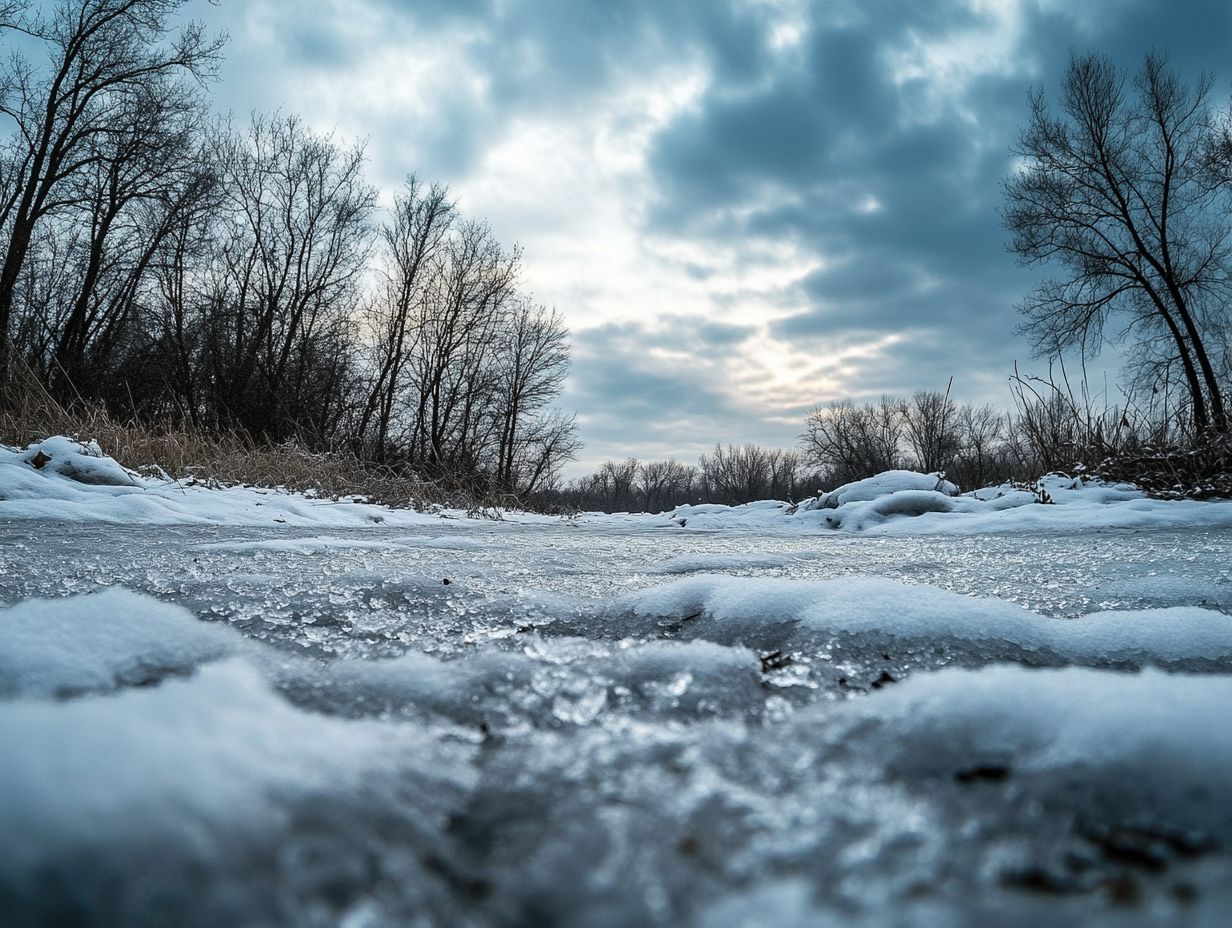
Low temperatures can greatly affect salinity levels. They influence how salts dissolve and moisture moves in the soil.
As temperatures drop, evaporation decreases, causing salt concentrations to rise near the soil surface. This creates stress for your plants, making it hard for them to absorb water.
In colder conditions, adjust your soil management practices. Implement better drainage systems to reduce saline water accumulation and revise your fertilization strategies to help your plants thrive.
Measuring Soil Salinity in Cold Weather
Measuring soil salinity in cold weather requires a variety of tools and techniques that can precisely assess the concentration of soluble salts present in the soil, even in challenging conditions. You can employ methods such as electrical conductivity (EC) measurement and soil testing to gain valuable insights into total dissolved solids the total amount of different substances dissolved in water and overall salinity levels.
For a more advanced approach, consider using electromagnetic induction, a method that uses magnetic fields to measure soil salinity, which offers non-invasive alternatives for effective salinity assessment in cold regions.
Tools and Techniques
Explore a range of exciting tools and techniques for measuring soil salinity, each offering unique advantages for assessing soluble salt concentrations.
Among these, electrical resistivity stands out as a powerful method, especially in cold weather conditions where other techniques might struggle. This tool effectively measures the soil’s resistance to electrical current, providing valuable insights into salinity levels, even in frozen terrains.
Similarly, time domain reflectometry provides precise measurements by analyzing the reflection of electromagnetic pulses in the soil, ensuring reliable data is obtained even in harsh environments. With robust soil analysis protocols designed specifically for colder climates, you can enhance the accuracy of identifying saline areas and take timely remediation actions, ultimately fostering better land management practices.
Preventing and Managing Soil Salinity in Cold Weather
Preventing and managing soil salinity during colder months requires a comprehensive strategy that combines sustainable agricultural practices with thoughtful soil management techniques. By adopting methods such as meticulous irrigation management, utilizing soil amendments like gypsum, and fostering biodiversity, you can effectively mitigate the detrimental impacts of salinity on agricultural productivity.
This proactive approach will help ensure healthier crop yields, even in the face of challenging climatic conditions.
Best Practices and Strategies
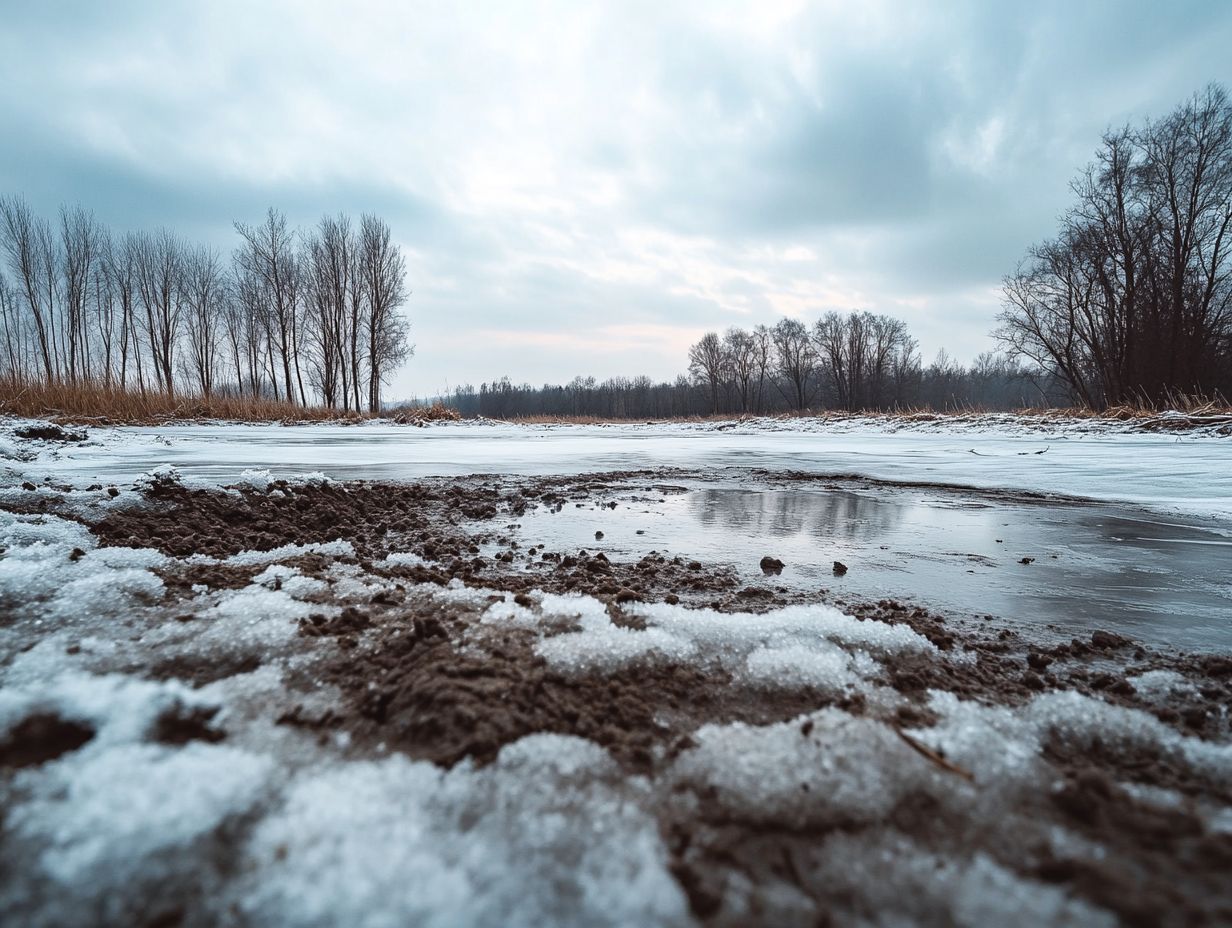
Implementing best practices and strategies for managing soil salinity is crucial for enhancing soil structure and ensuring long-term agricultural sustainability.
By adopting techniques like crop rotation, cover cropping, and integrated pest management, you can significantly improve soil health while mitigating the adverse effects of salinity. Utilizing advanced irrigation methods, such as drip or subsurface irrigation, allows for precise water application, effectively reducing runoff and evaporation.
Regular soil testing provides vital insights into nutrient levels and salinity indices, guiding you towards more well-considered choices. Ultimately, these sustainable practices not only elevate agricultural productivity but also foster environmental stewardship, ensuring that the land remains fertile for generations to come.
Impact of Soil Salinity on Plant Growth
Soil salinity significantly influences plant growth, impacting factors such as osmotic stress and specific-ion toxicity, which can ultimately lead to a marked reduction in crop yields.
You must grasp how varying salinity levels affect different types of plants, particularly halophytes that thrive in saline environments. This understanding is crucial for optimizing agricultural practices and ensuring sustainable productivity.
Effects on Different Types of Plants
The effects of soil salinity can vary dramatically across different plant types. This presents unique challenges for your agricultural endeavors and the broader spectrum of biodiversity.
This phenomenon reveals a significant disparity: some crops demonstrate remarkable adaptability to saline conditions, while others struggle to survive. Halophytes are the resilient champions of saline environments, thriving where traditional crops may falter. In contrast, more sensitive species often face stunted growth, diminished yields, or even total crop failure when confronted with elevated salinity levels.
This divergence creates agricultural challenges and raises ecological concerns. The loss of sensitive crops can disrupt local ecosystems and diminish overall agricultural productivity. Understanding these plant responses is crucial for developing effective strategies that enhance crop resilience and preserve biodiversity.
Frequently Asked Questions
What is soil salinity and how does it affect plants in cold weather?
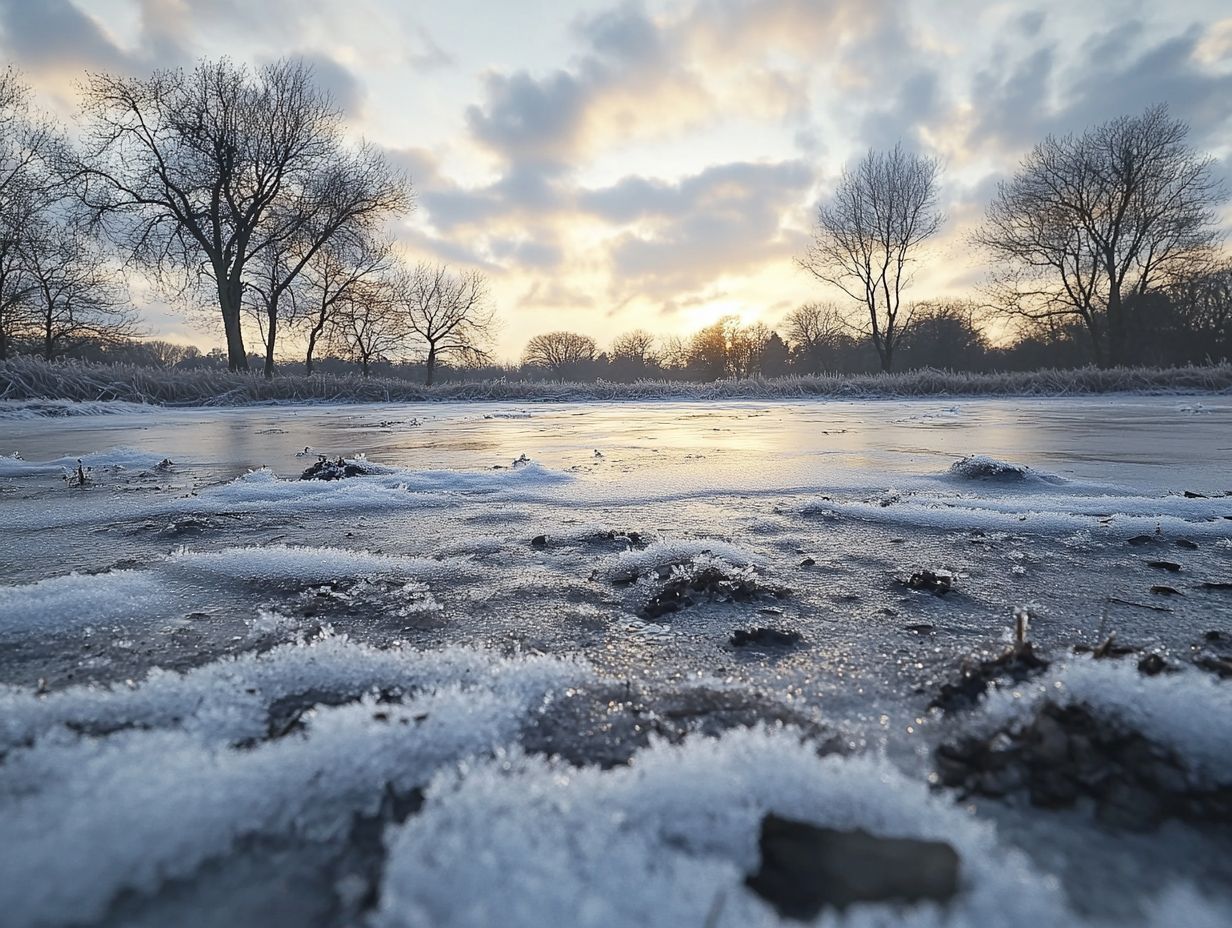
Soil salinity refers to the amount of salt present in the soil. In colder weather, the water in the soil freezes and expands, causing the salt to rise to the surface. This can damage plant roots and hinder their growth.
How does soil salinity impact crop production in cold weather?
High soil salinity, often caused by natural processes like the weathering of rocks or human activities such as excessive irrigation and salt-based fertilizers, can reduce the availability of water and nutrients to plants. This leads to stunted growth and decreased crop production, and in extreme cases, it can even kill plants.
What are some common signs of soil salinity in cold weather, including electrical conductivity (EC) and total dissolved solids (TDS)?
Plants affected by high soil salinity may experience stress, leading to yellow and wilted leaves, reduced growth, and stunted or unhealthy appearances. The soil may also appear white or crusty, indicating salt accumulation.
How can I test the soil salinity levels in my garden during cold weather using soil testing methods?
You can purchase a soil testing kit or send a sample of your soil to a testing laboratory. The results will indicate the salinity level in your soil, helping you determine the appropriate course of action.
What steps can I take to reduce soil salinity in my garden during cold weather while promoting sustainable practices?
Adding organic matter, such as compost or manure, can improve soil structure and reduce salinity levels, fostering better plant growth. Using proper irrigation management techniques and planting salt-tolerant crops, like halophytes, can also mitigate the effects of high soil salinity.
How can I prevent soil salinity issues during cold weather in consideration of climate change impacts?
Regularly testing and monitoring soil salinity levels, using appropriate irrigation and fertilization techniques, and selecting salt-tolerant plants can help prevent future soil salinity issues while enhancing environmental quality.
Start implementing these practices today to ensure your garden thrives!

